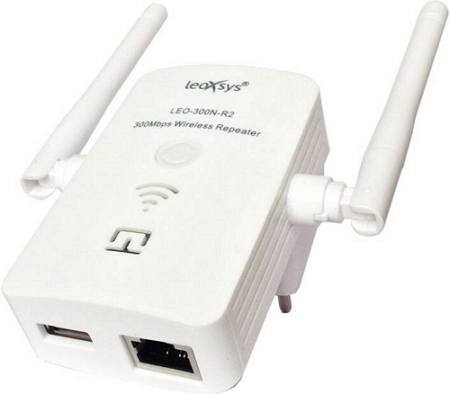Repeater definition along with Repeater function and how to work

If we put a PC or laptop we are far enough away from the WiFi transmitter, then we will have trouble catching the WiFi signal. As another example if we are in a certain space, where there is a partition divider quite a lot that separates us from the WiFi transmitter, then we will also have difficulty to get the WiFi signal.
Well, to overcome this, we can use a device called a repeater. The device is usually shaped like a box with multiple antennas, at least 2 antennas (some other types are not equipped with antennas). More on the definition of repeater and function and how it works, see the explanation below.
Repeater definition
Repeater is a device that serves to receive signals that contain data in a network. By using a repeater then network coverage will be wider. The Repeater receives a signal and then reradiates the signal identical to the original signal, but in a different way. Generally the repeater reradiates the signal in a different frequency than the original signal frequency.
Because of its main function, namely to expand the range of WiFi networks, then this repeater is often also called as a WiFi extender. In addition, because it also serves as a signal amplifier, then sometimes people and network technicians also often call the repeater as WiFi booster.
So if you meet the term in the market, you don't need to be confused because it all refers to the same device, which is a repeater. Repeater itself there are several types, namely 1) telephone repeater, 2) optical communications repeater, and 3) radio repeater. Each repeater has its specific function depending on its specifications.
The first type of repeater is telephone repeater. As the name suggests, you'll already be able to guess. Telephone repeater is a type of repeater used on the telephone line. On the telephone cable channel, the signal is usually degraded due to distant mileage. Therefore the repeater should be used to allow the signal to be received by the phone user clearly.
On the phone, the signal is transmitted in two directions. This causes the repeater system work on the telephone repeater to be more complex. In this system there should be no interference between one signal wave and the other to avoid any feedback that may interfere with the flow of communication. In addition to the land, telephone repeater is also used as a means of communication under the sea, or better known as submarine cable repeater.
The second type of repeater is optical communications repeater. This Repeater function to strengthen the signal coverage in fiber optic cable. In fiber optic cables, digital information is physically tangible as light pulses. Light pulses (in Indonesian is called Light Pulse) are formed from photons. These photons can be scattered randomly in the fiber optic cables.
To strengthen the signal, usually in the fibre optic cable there is a phototransistor that serves to convert the pulse of the light to the electrical signal form, which will then be strengthened by the amplifier. After that the electrical signal will be converted back to a light pulse by the help of laser beam. But now most fibre optic cables have been able to perform signal reinforcement without requiring pulse and signal transformation.
The third type of repeater we call the term radio repeater. This type of Repeater, as its name suggests, serves to strengthen radio signals. Generally, this type of repeater has one antenna that works as well as a receiver and transmitter. This type of Repeater will change the frequency of the signal received before retransmitted. Signals transmitted by the repeater signal will be able to penetrate the barrier object.
Radio repeaters have many types. Some of these include broadcast relay stations, microwave relays, passive repeaters, cellular repeaters, and digipeater. The repeater work system is often used to amplify the WiFi signal on a computer network generally using this type of repeater.
Repeater function
The Repeater function is to extend the WiFi network coverage. The hardware on the repeater has been programmed to receive the WiFi signal from the transmitter for later amplified. Once the signal is strengthened, the repeater will redistribute the signal. Thus the WiFi coverage will be wider.
How Repeater Works
Repeater function to extend the WiFi network coverage. This is done by accepting the data signal and then emitted again. Before re-emitted, the signal that has been entered into the repeater is reinforced first.
Basically the repeater has two types of components in it. The first component is responsible for receiving signal data from the transmitter. The second component reradiates the signal data. But before the signal data is retransmitted, the hardware on this repeater will change the frequency so that the data signal emitted becomes stronger. Therefore, the signal will become stronger and the coverage will be wider.
In the processing of the data signal into it, the repeater has two commonly used systems. Such systems are analog repeaters and digital repeaters. In the repeater analog, the data signal is transmitted in the form of analog data where the power consumption is directly proportional to the amplitude or magnitude of the signal transmitted. While digital repeaters transmit data signals in digital form. Digital Data is sent in binary form, which is represented by numbers 1 and 0. Additionally digital repeaters also perform additional processes on the signal data processed.
That is the sense of repeater and function and how it works. Now you understand that the main role of the repeater is to receive signals from a network and then re-transmit the signal to be wider (Rangenya).






.jpg)




